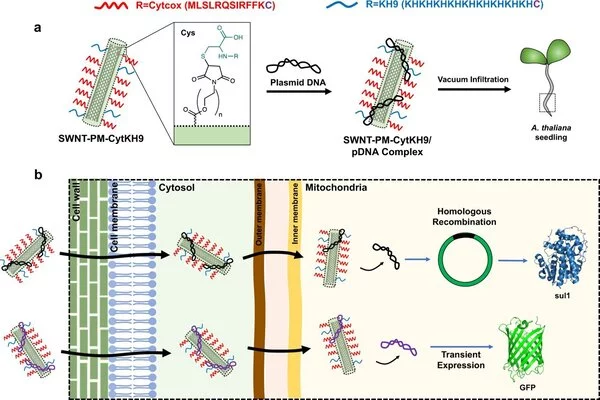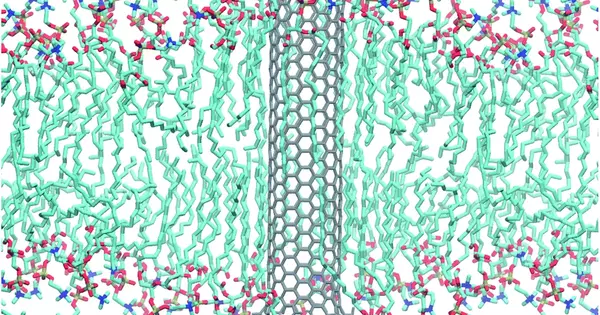Plant mitochondria are complex organelles that perform a variety of metabolic processes including the generation of energy for cellular functions as well as the synthesis and degradation of various compounds. Mitochondria are semiautonomous, dynamic organelles that change shape, number, and composition according to tissue or developmental stage. Coordination of genes present in both the nucleus and the organelle is required for the biogenesis of functional mitochondria.
RIKEN biologists have discovered an effective method for smuggling genetic material into the energy generators of plant cells, opening the door to coaxing plants to produce commercially useful compounds. Their findings were published in the journal Nature Communications. With the world’s population expected to reach nearly 10 billion people by 2050, the ability to manipulate plant genetics to increase food production will be critical to feeding the world.
Plants are also expected to become biofactories, producing useful chemicals such as drugs and fuels. “They can be engineered to produce other things besides food, such as various chemicals, pharmaceuticals, and recombinant proteins,” says Simon Law of the RIKEN Center for Sustainable Resource Science (CSRS). “The fact that you can use plants to make a lot of different things makes biotechnology such a promising field.”
They can be engineered to produce other things besides food, such as various chemicals, pharmaceuticals, and recombinant proteins. The fact that you can use plants to make a lot of different things makes biotechnology such a promising field.
Simon Law
One way to “reprogram” plants is to import genetic material into their cells, but this is challenging due to the thick cell wall that blocks many biomolecules.
Carbon nanotubes—rolled-up tubes of graphene that are a mere nanometer or so in diameter—are sufficiently slim to slip through the cell wall. But once inside the plant cell, carbon nanotubes are not very effective at targeting mitochondria—a key organelle responsible for generating energy and making and breaking down various compounds.
“Getting stuff through the cell wall, the cell membrane and then past mitochondria membranes is difficult and it hadn’t been achieved with high efficiency previously,” notes Law.

Law, Keiji Numata of CSRS, and colleagues have now used carbon nanotubes to efficiently transport DNA snippets into plant mitochondria. This was accomplished by first coating the carbon nanotubes with a polymer layer that allowed for the conjugation of short strings of amino acids known as peptides. The carbon nanotubes were able to target mitochondria thanks to the peptides.
The team increased the efficiency of DNA transfer to mitochondria by 30 times by conjugating the peptides on carbon nanotubes, compared to previous attempts that only used peptides.
“The first time I ran the experiment, I was skeptical because the results seemed too good to be true,” Law recalls. “However, after repeating it several times and getting similar results, I became more confident.”
The researchers demonstrated the method’s utility by importing a gene that increased plant growth rate. Other possible applications include accelerating breeding programs and modifying metabolic pathways to produce commercially useful chemicals. Furthermore, by varying the peptides coated on the nanotubes, other organelles in plant cells should be able to be targeted.





